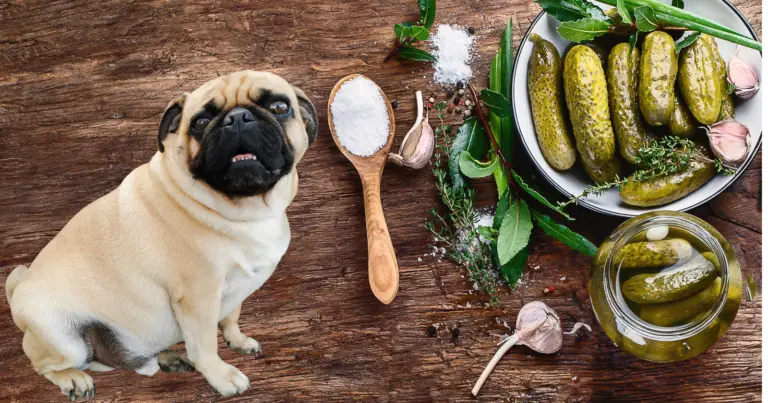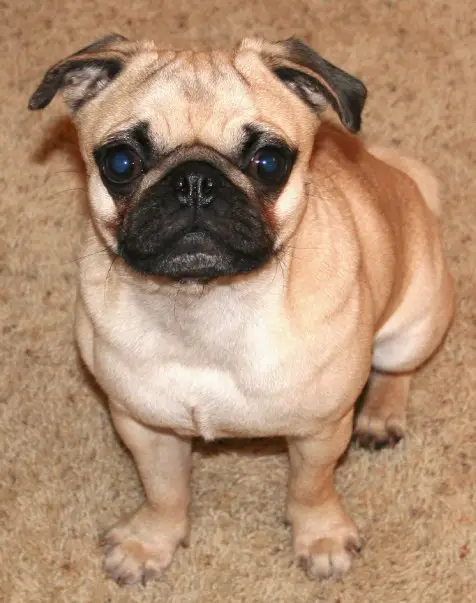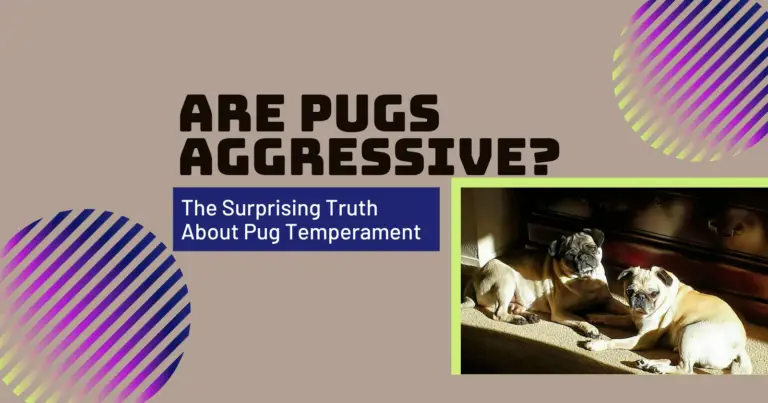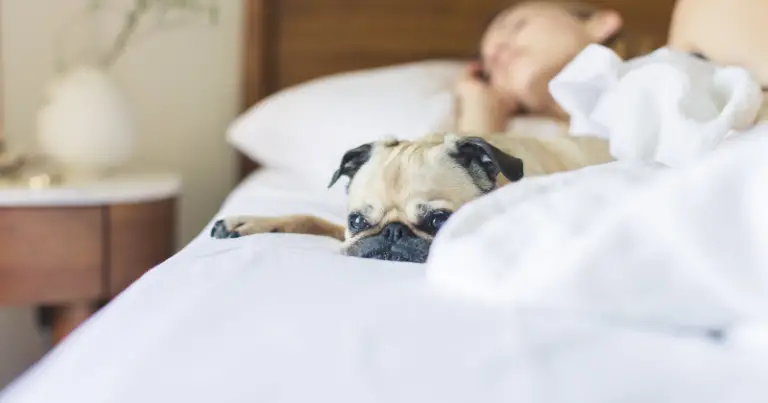Do Pugs Have Separation Anxiety? Tips & Tricks to Mastering the Art of Pug Independence

Ah, Pugs, those adorable, wrinkly-faced bundles of joy known for their charismatic personalities and endless devotion. But sometimes, that love comes with a price. If you’re a pug owner, you might have noticed your little pug busy with destructive chewing or howling like a werewolf when left alone. As a “Pug Dad,” I am always asked do pugs have separation anxiety. Fear not, fellow pug aficionados!

In this article, we’ll dig into the mysterious world of pug separation anxiety, uncovering its causes, spotting the signs, and sharing some paw-some tips on keeping your pug happy and healthy when you’re not around. So, buckle up and get ready for a fun, informative ride!
Contents
Table of Contents
What’s the Deal with Separation Anxiety in Dogs?
Dogs, regardless of their breed, can be affected by separation anxiety. It’s a behavioral issue where a dog gets too attached to their human or other dogs, and as a result, they feel stressed when separated. In my experience, pug puppies and adult pugs always crave human interaction!
Separation anxiety is more common in some breeds, and pugs, unfortunately, are among them. This can lead to an adult pug behaving like a naughty puppy, barking excessively, or showing other undesirable traits.
You can manage your pug’s separation anxiety with patience and proper care. As social animals, dogs, like pugs, crave companionship. If you leave a pug alone for long periods, it may get anxious, leading to destructive behavior. Recognizing the symptoms and helping your pug cope is essential.
Do Pugs Have Separation Anxiety? What is Separation Anxiety in Dogs?

Separation anxiety is a condition that affects many dogs, regardless of breed. It is a behavioral issue when a dog becomes overly attached to their owner or family and becomes anxious or stressed when separated. This can lead to destructive behavior, excessive barking, and other undesirable traits in your furry friend.
Dogs are social creatures and thrive on companionship. They may become anxious and stressed when left alone, leading to destructive behavior. Separation anxiety can be challenging but can be managed with proper training and care.
Get The Free Food Eating Guide That Keeps My Pug Happy and Playful Even at 13 Years Old
100% Beginner Friendly & Lists Real Foods Your Pug Can Actually Eat!
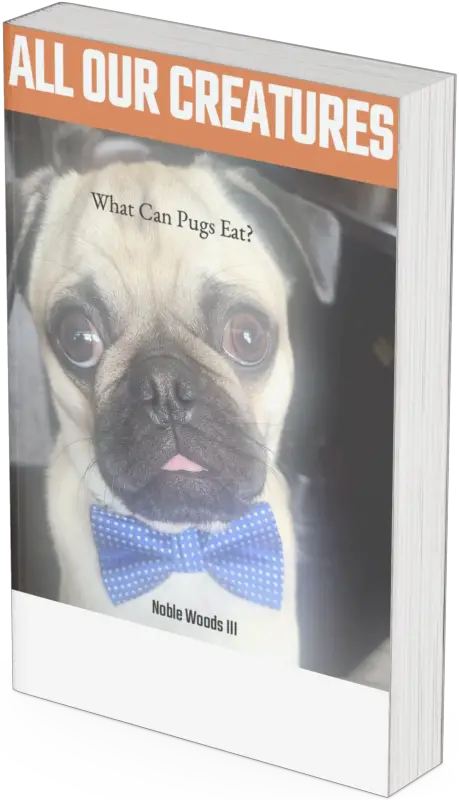
Separation anxiety is more common in some breeds than others, and pugs are one of the breeds prone to developing this condition. It is essential to recognize the symptoms of separation anxiety in your pug and take steps to help them cope.
Decoding Pug Behavior

Pugs are famous for their playful antics and lovey-dovey nature, making them the ultimate companion dog. But beware of their stubborn and independent streaks, which can challenge house training. Sensitive to their owner’s emotions, pugs can detect stress and anxiety, which might add to their anxiety when left alone. They may get stressed and use destructive chewing or excessive barking when left alone. Pugs’ need for companionship also makes them prone to separation anxiety.
Signs of Pug Panic: Separation Anxiety Edition
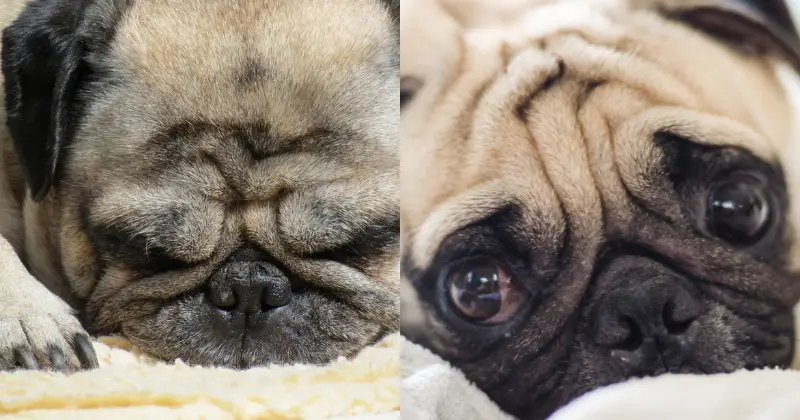
Recognizing separation anxiety signs in your pug is vital to help them cope. Common symptoms include:
- Destructive chewing (say goodbye to your favorite shoes!)
- Howling
- Indoor bowel movements, even if house-trained
- Attempting to escape from their crate or room
- Compulsive pacing or restlessness
- Drooling or panting like it’s going out of style
- Self-harm, such as biting or scratching themselves
If you notice any of these signs in your pug, it is essential to take action to help them cope with their anxiety.
Causes of Separation Anxiety in Pugs
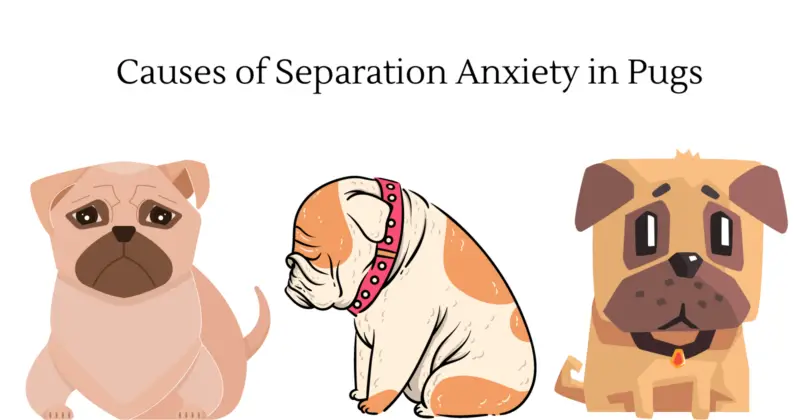
There is no one specific cause of separation anxiety in pugs. It can combine genetics, past experiences, and environmental factors. Some common causes of separation anxiety in pugs include:
- Lack of socialization or exposure to new environments
- Changes in the household, such as a move or a new resident
- Loss of a family member or pet
- A traumatic experience, such as being left alone for an extended period
- Lack of exercise or mental stimulation
It is essential to identify the cause of your pug’s separation anxiety so that you can take steps to address it.
Pug Panic Triggers: Why Separation Anxiety Happens

If your pug is exhibiting signs of separation anxiety, there are several things you can do to help them cope. Here are some practical tips to help your pug manage their anxiety when you’re not around:
- Lack of socialization or exposure to the outside world
- Household changes (moving or new family members)
- Losing a family member or pet
- Traumatic experiences, like being left alone for extended periods
- Insufficient exercise or mental stimulation
Identifying your pug’s anxiety cause is crucial to address and resolving it.
You would love to read: Transform Your Pug into a Showstopper: The Ultimate Guide to Grooming Pugs
Training Techniques to Reduce Separation Anxiety
One of the most effective ways to help your pug cope with separation anxiety is through training. Here are some training techniques that can help reduce your dog’s anxiety:
- Gradual desensitization: Think of it as baby steps for your pug. Start by leaving them alone briefly, then gradually increase the duration as they become more comfortable flying solo.
- Positive reinforcement: Shower your pug with praise and rewards for good behavior, such as keeping their cool when you depart or returning to their crate drama-free.
- Crate training: A cozy crate can be your pug’s haven when they’re home alone. Ensure it’s comfortable with their favorite toys and blankets for the ultimate pug pad.
Medications for Pugs with Separation Anxiety
Sometimes, a vet trip may be necessary to help your pug manage their separation anxiety. They might prescribe anti-anxiety medication or a sedative to help your pug chill out when you’re not around. But remember, medication should be the last resort and always under a veterinarian’s watchful eye.
Holistic or OTC Remedies
For most pugs struggling with separation anxiety, you might want to explore using valerian root as an anti-anxiety supplement. This natural herb is known to have calming effects on the nervous system, making it a potentially effective solution for anxious pugs.
However, it’s crucial to consult with your veterinarian before incorporating any supplement into your pug’s routine. Remember, if needed, a comprehensive approach that combines training, environmental adjustments, and supplements is the best way to help your beloved pug overcome anxiety.
Watch this video: Do Pugs Have Separation Anxiety? Tips & Tricks to Mastering the Art of Pug Independence
Preparing Your Pug for Alone Time
It is essential to prepare your pug for being alone so that it can cope with separation anxiety. Here are some tips to help prepare your pug:
- Start preparing your pug for being alone as early as possible so they get used to it.
- Create a routine: Establish a routine for your pug that includes alone time. This will help them anticipate when you’ll be leaving and returning.
- Provide mental stimulation: Leave puzzles or toys that will keep your pug occupied while you’re away.
- Avoid making a big deal of leaving: Don’t make a big fuss when leaving or returning. This will help your pug learn that it’s a normal part of the day.
Tips for Leaving Your Pug Alone
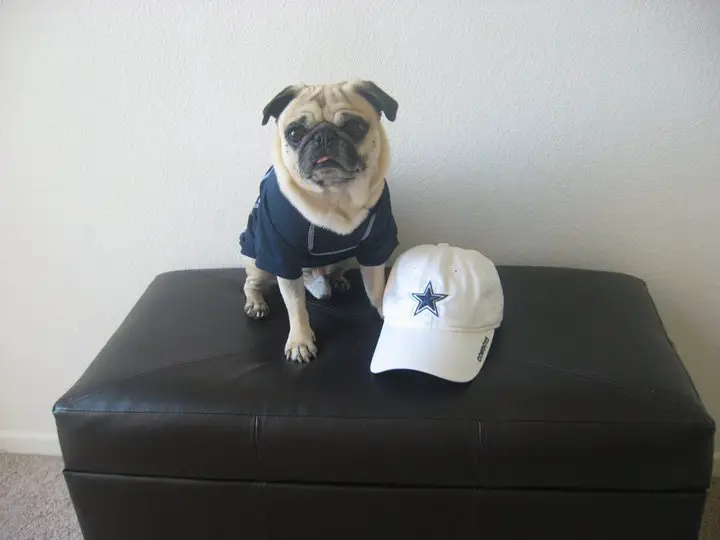
When it’s time to head out, keep these pointers in mind:
- Exercise before you exit: Tire your pug out with plenty of exercises before you leave so they’re more likely to snooze during your absence.
- A comfy haven: Ensure your pug has a cozy space to lounge and relax while you’re away.
- Soothing scents: Calming aromas like lavender or chamomile can help your pug unwind.
- Background noise: Leaving music or the TV on provides some comforting background noise to help your pug feel less lonely.
Dog Walkers, Sitters, and Anxiety-Busters!
Oh, the struggle is real when pugs suffer from separation anxiety! You might think that leaving them for even a small break would be fine, but suddenly, it’s like you’ve abandoned them for a lifetime. The short answer? Get creative!
If you need to leave your pug for a few hours, consider hiring a dog walker or sitter to entertain your furry companion. It’s like having a personal therapist for your pug’s anxiety (though don’t be surprised if they end up discussing their favorite treats).
So, while you’re out conquering the world (or running errands), your pug can enjoy some much-needed attention and, who knows, maybe even gossip about other dogs in the neighborhood!
In Conclusion: Do Pugs Have Separation Anxiety

Navigating separation anxiety might feel like a Herculean task for pug parents, but it’s conquerable with the right attention and care! Keep an eye out for the telltale signs of separation anxiety in your pug, regardless of your pug’s age, and be proactive in addressing the issue.
Implement training techniques, baby gates, chew toys, and dog walking services, or even introduce interactive toys to make your pug home a haven of fun and confidence. Your pug deserves the best, and with persistence and commitment, you’ll help them overcome their anxiety, leading to a happier, more confident dog and a harmonious household.



